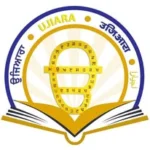Baba Deep Singh (26 January 1682 – 13 November 1757)
is revered in Sikh history as one of the most venerated martyrs, known for his unwavering devotion and sacrifice for Sikh values and the sanctity of the faith. He was the first head of the Shaheedan Misl (Tarna Dal), a faction of the Khalsa military established by Nawab Kapur Singh, who also led the Akali Buddha Dal. Additionally, the Damdami Taksal regards Baba Deep Singh as its founding leader.
Early Life
Born into a Sandhu Jat Sikh family in Pahuwind village in Amritsar district, Baba Deep Singh’s parents were Bhagta and Jioni. On Vaisakhi 1700, he traveled to Anandpur Sahib, where he was initiated into the Khalsa by Guru Gobind Singh Ji through the Amrit Sanchar ceremony. He became a close disciple of the Guru, learning martial arts, horseback riding, and scripture. He studied Gurmukhi and Sikh philosophy under Bhai Mani Singh Ji. After two years, he returned home in 1702, but was later called to Talwandi Sabo in 1705, where he assisted in transcribing the Guru Granth Sahib Ji.
Military Career
In 1709, Baba Deep Singh joined Banda Singh Bahadur in key battles, including the Battle of Sadhaura and Battle of Chappar Chiri. In 1733, Nawab Kapur Singh appointed him the leader of a jatha (armed unit). During the Sarbat Khalsa gathering on Vaisakhi 1748, the Dal Khalsa was reorganized into 12 Misls. Baba Deep Singh was given command of the Shaheed Misl.
Following the invasion of Nadir Shah in 1739 and the weakening of the Mughal rule in Punjab, Sikhs began asserting control. According to historian Hari Ram Gupta, a short-lived Sikh-led administration was established in Sirhind in 1740, and Daranat Shah, believed by some to be Baba Deep Singh, was made its head. However, Mughal forces quashed the uprising in 1741.
Desecration of the Harmandir Sahib
In April 1757, during his fourth invasion, Ahmad Shah Durrani was ambushed by Sikhs who rescued many captives and looted his caravan. Enraged, Durrani ordered the destruction of the Harmandir Sahib (Golden Temple), filling the holy sarovar with the entrails of slaughtered animals. He left Punjab under the command of his son, Prince Timur Shah, supported by 10,000 troops under General Jahan Khan.
When Baba Deep Singh, aged 75, heard of this desecration, he emerged from scholarly seclusion and vowed to rebuild the shrine. At Damdama Sahib, he declared: “May my head fall at the feet of Sri Darbar Sahib.” Initially joined by 500 warriors, his march swelled to over 5,000 Sikhs as he advanced toward Amritsar.
Martyrdom and Legacy
On 13 November 1757, the Battle of Amritsar took place. Baba Deep Singh led his forces against the Afghan army. Two popular accounts describe his final moments:
-
In the legendary version, Baba Deep Singh was fully decapitated, yet continued to fight, holding his severed head in one hand and his sword in the other, until he reached the precincts of Harmandir Sahib, where he attained martyrdom.
-
According to another version, he suffered a mortal wound to the neck, but remained conscious. When reminded of his vow to reach the temple, he held his head up with one hand and cleared his path with the other, ultimately breathing his last at the temple’s edge.
The Sikhs, inspired by his sacrifice, defeated the Afghans and reclaimed their honor.
Today, the site where Baba Deep Singh’s head fell is marked within the Golden Temple complex, where devotees from across the globe come to pay their respects. His Khanda (double-edged sword), used in his final battle, is preserved at the Akal Takht, the highest temporal seat of Sikh authority.


Leave a Reply